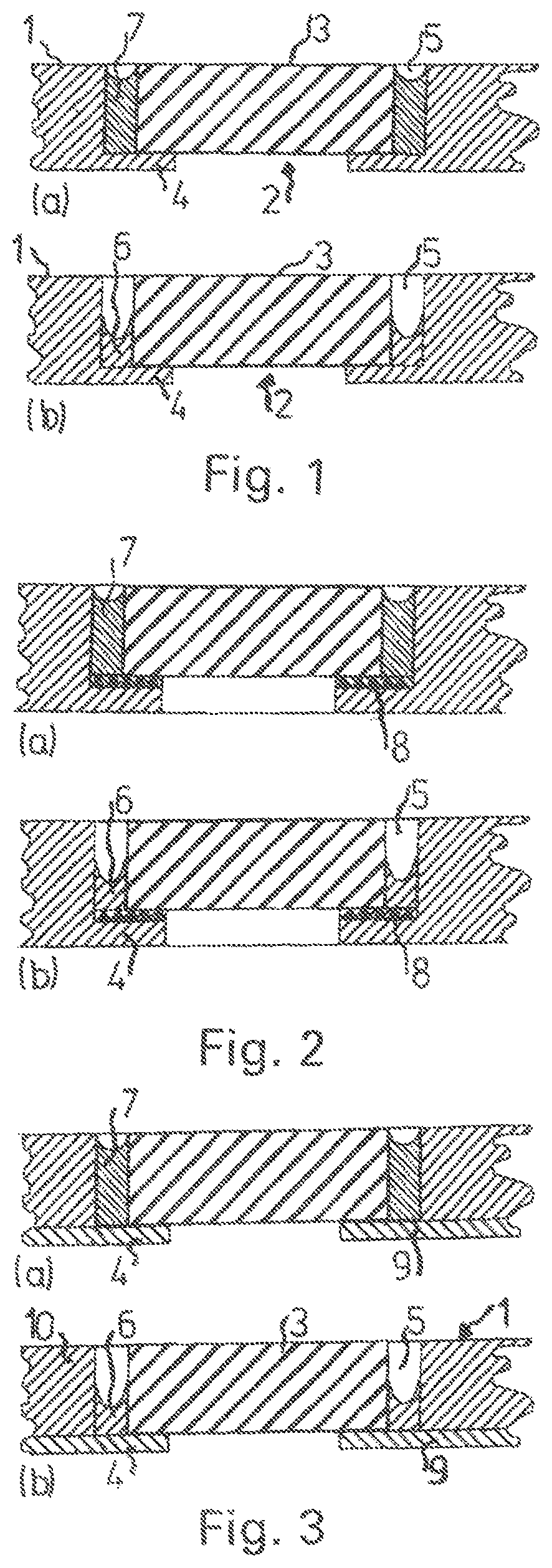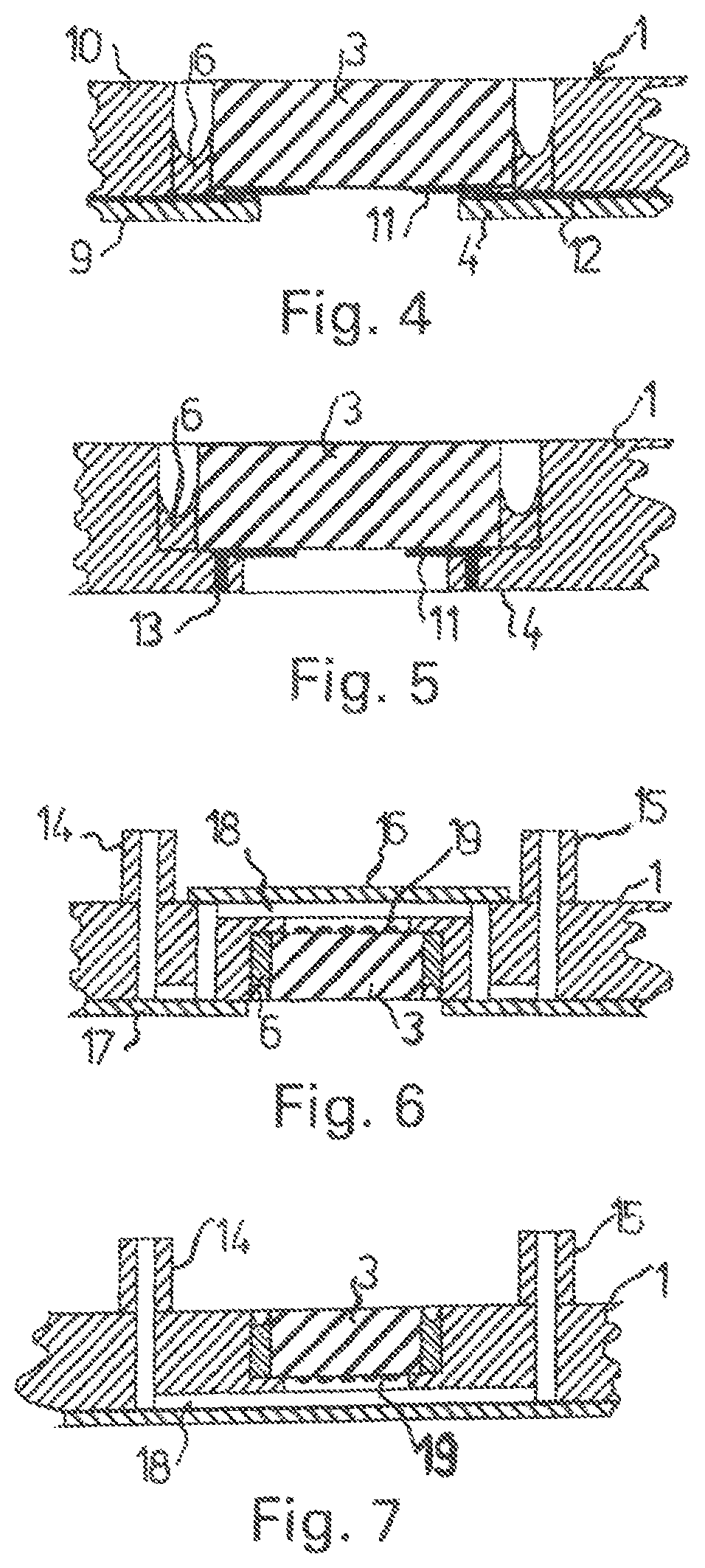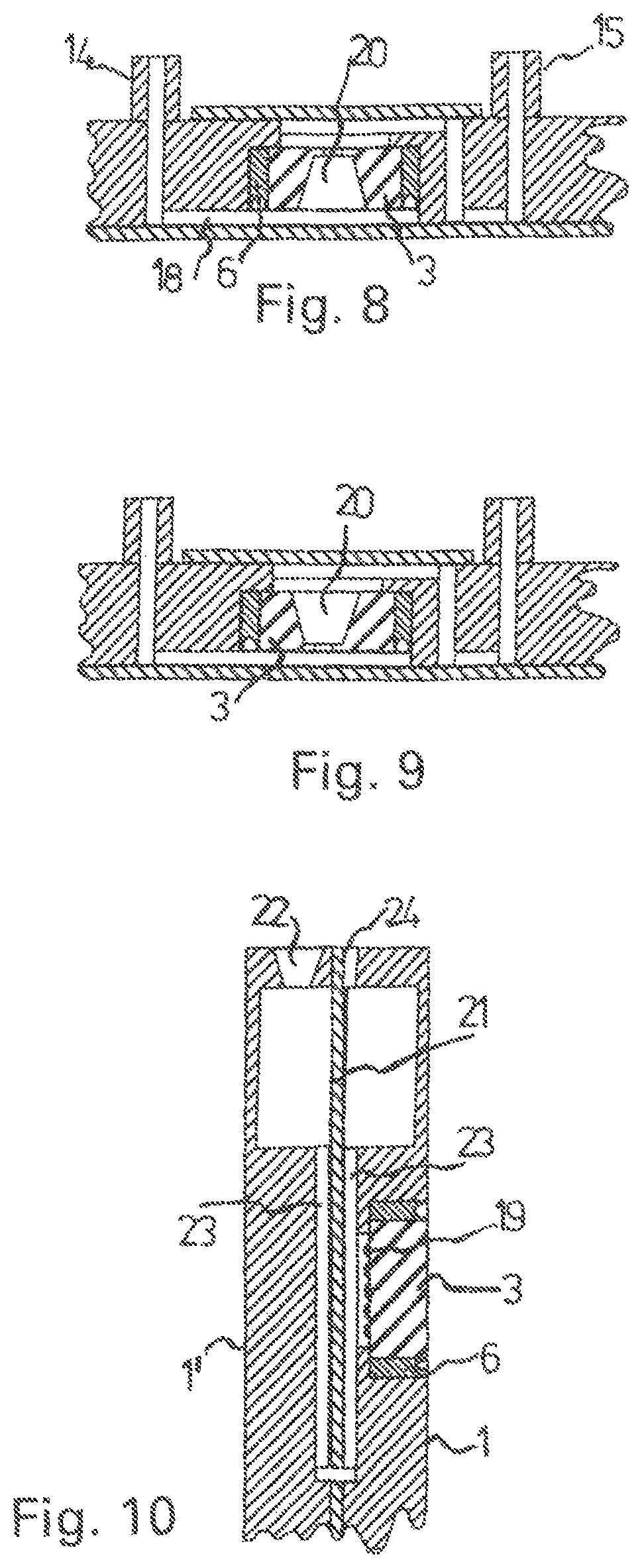Method for connecting components of a microfluidic flow cell
a microfluidic flow cell and component technology, applied in the field of connecting components of microfluidic flow cells, can solve the problems high cost of materials, and achieve the effects of increasing functional complexity, low cost, and high cost of materials
- Summary
- Abstract
- Description
- Claims
- Application Information
AI Technical Summary
Benefits of technology
Problems solved by technology
Method used
Image
Examples
Embodiment Construction
[0038]A microfluidic flow cell as shown partially in FIG. 1 comprises a plate-shaped carrier structure 1, which consists preferably of an amorphous plastic such as PMMA, PC, PS, COC, or COP.
[0039]A microcomponent 3—in the example shown, a component with the basic form of a circular disk or a square plate—is arranged in a pocket 2 of the carrier structure 1. The microcomponent is preferably made of silicon, but it can also be formed out of metal, ceramic, plastic, or glass with a surface which can be functionalized in various ways.
[0040]The microcomponent 3 rests on a ring-shaped shoulder 4 of the pocket 2; except for this shoulder, the pocket passes straight through the entire thickness of the carrier structure 1. An annular gap 5, formed between the carrier structure 1 and the microcomponent 3, is open on one axial side, whereas, on the other axial side, it is closed off by the ring-shaped shoulder 4 of the carrier structure 1. The width 3 of the annular gap 5 is typically in the r...
PUM
 Login to View More
Login to View More Abstract
Description
Claims
Application Information
 Login to View More
Login to View More - R&D
- Intellectual Property
- Life Sciences
- Materials
- Tech Scout
- Unparalleled Data Quality
- Higher Quality Content
- 60% Fewer Hallucinations
Browse by: Latest US Patents, China's latest patents, Technical Efficacy Thesaurus, Application Domain, Technology Topic, Popular Technical Reports.
© 2025 PatSnap. All rights reserved.Legal|Privacy policy|Modern Slavery Act Transparency Statement|Sitemap|About US| Contact US: help@patsnap.com



